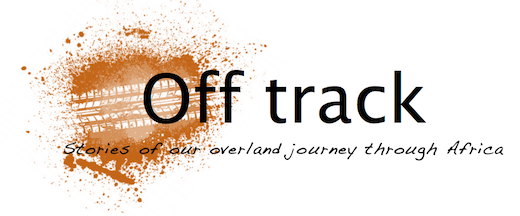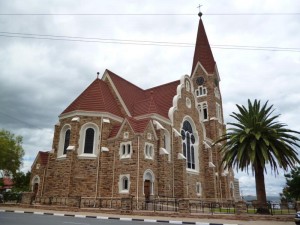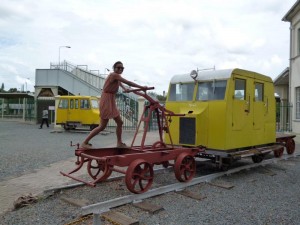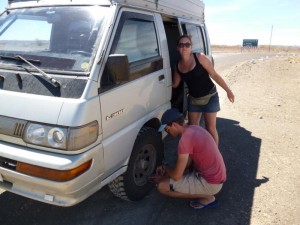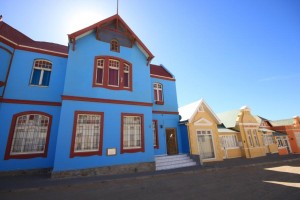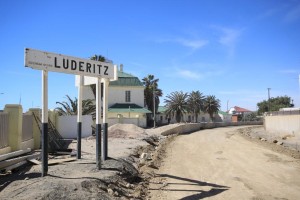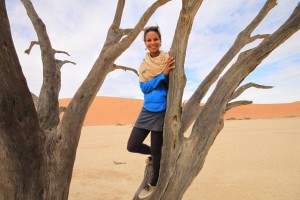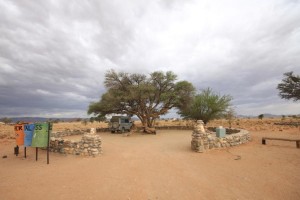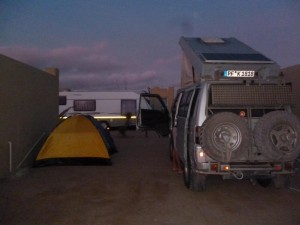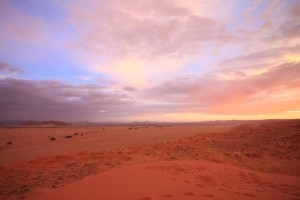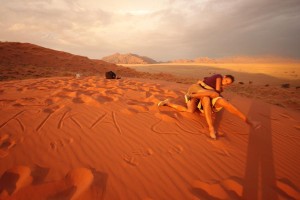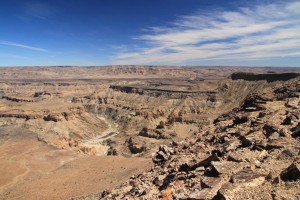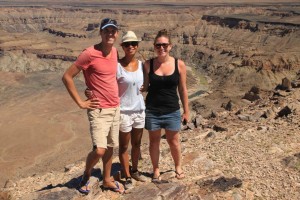Taking in German heritage: our trip through Namibia
We have been speeding through the last three countries so fast, that although this post is going to be about Namibia, we actually are in South Africa already. But the memories about Namibia are still very fresh, so don’t think I am selling you yesterday’s newspaper 🙂 When we tell people about our travel, many ask us which country we liked the best. We used to say Ethiopia, because of the uniqueness of the country: the landscapes, the food, the music and the rich cultural heritage. Now we have found the most beautiful country: Namibia.
Our impressions
Namibia was very, very different from other, in our eyes typical sub-Saharan countries like Uganda, Tanzania and Malawi. Gone were the typical one-man kitchens on the street, the garbage and the animals on the streets, women wearing traditional batik-dresses were nowhere to be found. But this wasn’t the main cause of our shock-effect, we hadn’t seen these typical African features since Zambia. The first city we visited in Namibia was the capital Windhoek. And the further we drove into the city, the bigger our eyes grew. Windhoek was not what we expected at all. We saw large malls, broad streets lined with neat sidewalks, lush parks, luxurious cars and people in Western clothes. At first sight, there was no trace of poverty nor of traditional Namibian people. This wasn’t per se a negative thing, we just had to change our mind-set a bit.
Also the people mix was considerably different: there was a large share of white people, larger then in any other African country we were before, and there were coloured people in all shades of brown. It was remarkable to see, because some people had colour-hair-eyes combinations I’ve never seen before. Anywhere. Some examples: light skin with a light brown afro and blue eyes, light brown skin with blond frizzy hair and green eyes, dark brown with sleek hair. And there is one typical Namibian rarity sometimes seen at descendants from the Nama tribe and white colonialists: one blue and one green eye. I found it impolite to take pictures, but we were fascinated by this rich skin colour palette.
The German colonial influence is still very present today. Every third shop, medical practice or eatery displays a German name. A lot of wild farms are owned by people descending from German colonialists. The wild farms are something typical for Namibia and also South Africa. When thinking about a wild farm, you should imagine a large, rural area of several square kilometres with a fence marking the end of the property. The owners live on the farm and own livestock like antelopes, kudus, springboks or cows. Additionally, some offer game hunting to tourists, others have a campsite for overlanders included.
A bit of history on wild farms
Once we were driving through an empty, semi-arid desert at the end of the day, looking for a place to stay. We pulled up to a wild farm where a nice family greeted us in accent-less Hochdeutsch. “Guten Tag, freut uns sehr, Sie wilkommen zu heißen. Was können wir für Sie tun? Haben Sie Interesse an unseren Campingplatz?” It was a weird sensation to hear flawless German from Namibians in the middle of nowhere. Now, I’m not the history expert, but from what we have read and heard, these pieces of land were acquired rather unethically from the end of the 19th century. At the beginning of the colonisation, the German Schutztruppe killed large numbers of indigenous people. Initially they aimed to stop the fighting between tribes and to reinstall peace & quiet to create circumstances beneficial for trade, later because they sought to increase power. Fertile areas in German South-West Africa, how Namibia was called at that time, were very scarce. The colonialists drove the remaining people to less fertile lands and claimed almost all these fertile grounds. Some land was ‘legally’ bought. Legal in the sense that there were contracts in place. Germans paid the Herero, Nama and Baster (local tribes) with Western products, payments that didn’t necessarily reflect the value of the land. Even when the local tribes didn’t want to sell or didn’t accept Western products as payments, the new settlers would drive their trucks into the villages, dump the products, and the land was considered ‘paid for’. ‘Legal’, but not ethical. When after WWI administrative power over German South-West Africa was transferred to South Africa, many Boers (descendants from the Dutch colonialists in the Cape region) settled in South-West Africa and took their share of land. After Namibia gained independence, some of the land was given back to the local tribes, but no major expropriation occurred. That’s why you’ll probably hear Afrikaans and sometimes German when you call at a farm in Namibia.
More differences
The food is also different here. Namibian food is not the typical African combo of rice-beans-chicken, but game: huge, bloody grilled steaks from any animal that jumps around on these wild farms. With mashed potatoes or ouderwetse piepers (Salzkartoffeln) on the side. Besides that, there are luxurious offerings of German food. Conny had gotten more and more excited about the possibility to eat Schweinshaxe, Schnitzel and Spätzle and after having dodged all this fried chicken before, I myself couldn’t wait to say the words ‘medium-rare, please’ to the waiter. It must have been difficult for Amelie. Being in Africa for the first time, she wanted to eat typically African. Instead, the poor girl got dragged into Joe’s beer house preparing everything but African food.
The public at these venues is predominantly white, by the way. We laid hands on the flyer from the Brauhaus in Swakopmund. Looked like a nice place. Would just fit right in a random town in the Heimat. The flyer promised to be “the place where the locals meet!” And then two pictures of their crowded venue showing not one black or coloured person.
The camping here was also on a whole other level. The campsites were structured, like in Europe, but then the 2.0 version: every place has a place for cooking, always a BBQ (here Braai), and some
campsites had one shower and toilet cubicle per place. Very luxurious.
And lastly let me introduce to you: muscled, young men walking around as if they are body builders in the making. There are all wearing tanktops or wifebeaters and shorts and their eyes are constantly looking for a grill. The Afrikaner boys. These are the kids of Dutch settlers who moved from the Cape to Namibia when there were better possibilities for making a living. They are Namibians, and all white. They were born & raised on farms and brought up with mainly hunting and eating meat. They love meat so much, it looks like they had already liquid meat in their bottles as babies. They eat so much meat, that one of the guys we met even, got a protein poisoning (…). They usually went to boarding school abroad, but most come back to live on their farm and do their hunting.
Why Namibia was the most beautiful country we have seen in Africa? Because of the breathtaking views in Damaraland, the impressive Fish River Canyon, the red sand dunes in Sossusvlei and the endlessness of the Namib desert. We would recommend anyone to spend at least one holiday in this country.
Yes, my pass!
There were so many ‘unafrican’ things about this country, but there was one situation that showed us that Namibia is still African. When we arrived in Keetmanshoop, 500 km from Windhoek on our way to South Africa, I discovered that I, idiot that I am, left my passport at the lodge in Windhoek. This was a bit problematic because we wanted to cross the border the morning after. Driving back was not really an option, since 2x 500 km is quite diesel- and time-heavy. We called the hostel, asking if they could send it with DHL. She could, she assured us, but she had no idea of the costs and DHL was already closed. Hmm. Still being on the cheap, this wasn’t the best option. So Conny had the bright idea that I could take a train back. We made inquiries and there was actually a night train one hour later. The evening after I could take the same train back, setting us back one day at acceptable costs. A day delay…weren’t there faster options? Then Conny thought of taking a minibus back so we would only lose half a day. So I asked a random family at the train station and the husband took out his mobile phone and called a befriended minibus driver who could take me. We thought ‘well done, all set then.’ But then I thought, why not just having that driver pickup my passport in that hostel so I don’t have to go to Windhoek? Long story short: that driver called another driver who leaves Windhoek in the morning for Keetmanshoop, driver called the hostel, I called a friend at the hostel to pay the receptionist for a taxi to bring my passport to the bus driver in Windhoek, and half a day later some bus driver named Heinrich handed me my passport. This is only possible in Africa. You just gotta love it.
Two empty nesters
Let me take the opportunity here to express my admiration for how Amelie adjusted to our way of travelling. Without complaining, she managed to squeeze her bag into a tiny space in the car, slept in a tent in Africa, even did wild camping with us when there were wild zebras in close vicinity. It went very well and we were very glad that she travelled with us a few weeks. We had a weird, empty-nest sort of feeling when we had dropped her off at the airport and headed towards South Africa.
